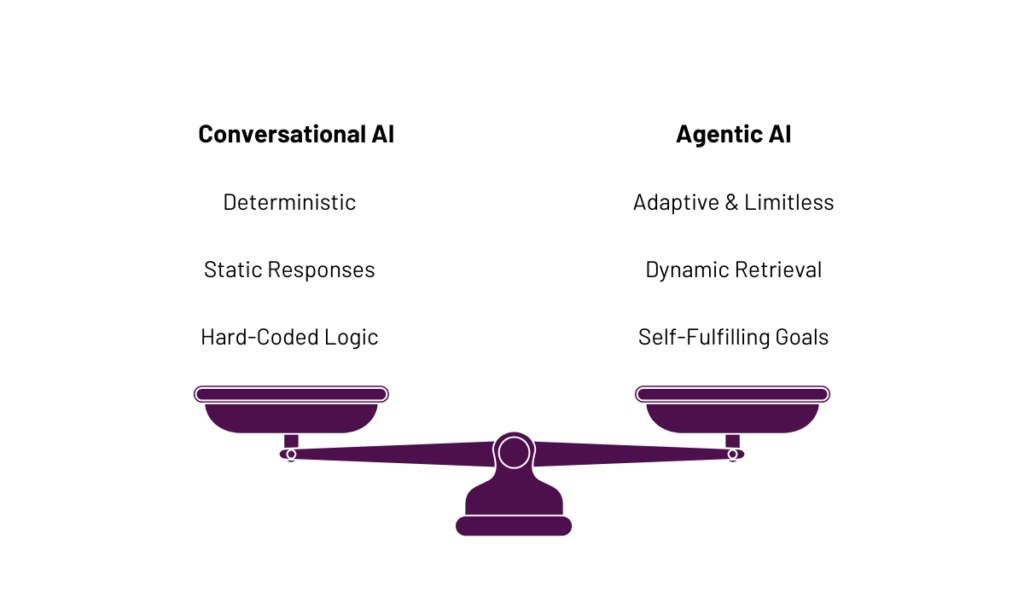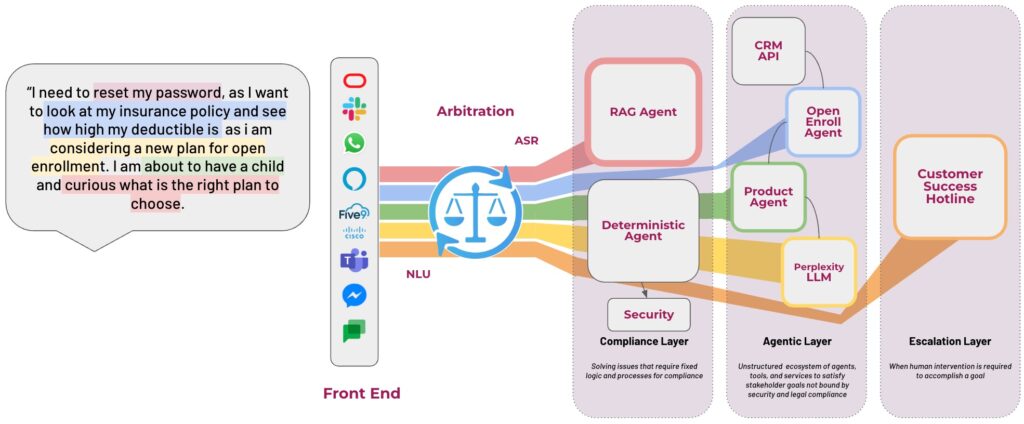
The Power of 100% Upsell: Maximizing Revenue at Every Drive-Thru Interaction
Find out how much revenue increase you’ll see at your drive-thru locations with an AI voice assistant.
Resources
Get the latest voice AI news, keep up on trends, get expert advice, and discover new solutions.
Our Company

Frost & Sullivan Names SoundHound AI a Leader for Enterprise Conversational AI in Healthcare 2024

Headlines are filled with stories about the transformative potential of Agentic AI, but what exactly sets it apart, and why does it matter for businesses striving to deliver exceptional customer experiences?
Agentic AI is a new methodology that expands the capabilities of conversational AI beyond single-task, pre-programmed dialogue paths and hard-coded instructions.
Agentic AI is a multi-agent framework within conversational AI that marshals the power of numerous agents working together to solve complex, multi-stage problems that require contextual understanding and iterative decision-making.
It’s a model that helps service and operations leaders balance the delivery of seamless and impactful experiences at scale, with a sustainable operating cost, while also balancing growing complex issues such as compliance and legal hurdles that stifle innovation.
Agentic AI adds a powerful dimension to conversational AI by handling more complex use cases such as mortgage processing, healthcare interactions with patients, or insurance claims processing that are reliant on dynamic and conditional values and which a deterministic model alone can’t handle.
Conversational AI has long been a reliable solution for businesses seeking consistent, cost-effective automation. Its engineering-centric design relies on deterministic logic — pre-programmed dialogue paths and hard-coded instructions that guide user queries through fixed decision trees.
For example, if a customer asks about resetting a password, conversational AI follows a specific, predefined script, delivering consistent but rigid responses. Many enterprises want this level of consistency with passwords. This structure works well for simple, repetitive tasks where consistency is key. It’s also cost-effective, as it doesn’t require ongoing training or the adaptive flexibility needed in more complex scenarios.
However, as customer expectations grow and business challenges become more dynamic, the limitations of deterministic conversational AI become apparent. In multi-step, highly variable interactions — like loan approvals, personalized service recommendations, or resolving intricate customer queries — deterministic systems often fall short. They lack the adaptability to respond to unpredictable inputs or orchestrate complex workflows seamlessly.

Agentic AI marks a bold departure from the rigidity of deterministic conversational AI. Instead of relying on static rules and pre-programmed scripts, it operates as a dynamic, goal-oriented system capable of adapting to real-world complexities. It’s not just a tool for automating tasks — it’s a transformative approach to solving problems, managing resources, and achieving business outcomes.
Agentic AI is often described as “description-centric.” Here’s how it works:
This approach allows Agentic AI to handle complexity with ease because it is a framework for multiple agents to work together in a conversational AI platform, enabling Agentic AI to:
But the real power of Agentic AI isn’t just in what these AI agents can do — it’s in knowing when and how to deploy them within your existing infrastructure.
With our Conversational AI Platform, decisions are determined based on a range of factors, and intelligently directs requests to the most appropriate layer (Figure 1). Need a password reset? The system recognizes the security-critical nature of the request and routes it through pre-defined, deterministic workflows using retrieval-augmented generation (RAG) that ensures compliance and consistency.
Figure 1. How Agentic AI expands the capabilities of conversational AI

What about an employee looking for information about a company’s insurance policy to understand deductibles around parental leave policies and which plan would be optimal for his family? No rules-based approach could handle this request. So our arbitration mechanism directs this request to the Agentic AI layer that builds a set of actions based on what the desired outcome should look like: helping the employee arrive at the best decision.
Its design is informed by a deep understanding of business processes and data relationships, including which resources are available, which constraints exist, and what the success criteria are.
The good news is that today we have these Agentic AI capabilities, and we are working with customers to build them out.
For existing and new customers to our Conversational AI Platform, our approach is built on a fundamental understanding: different tools serve different purposes. Security requirements, latency considerations, auditability needs, cost constraints, and maintenance overhead all play crucial roles in how different requests are handled.
Increased demands on service and operations in today’s business environments call for both innovation and reliability. This requires a platform that delivers both – exciting new capabilities through agentic AI, coupled with the proven strength of a conversational AI foundation.
Subscribe today to stay informed and get regular updates from SoundHound Inc.